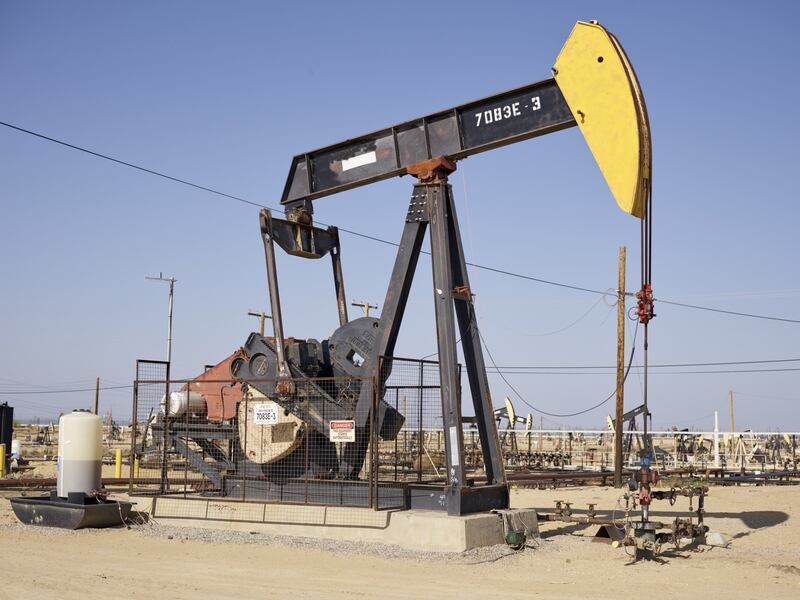Oil prices edged higher on Monday ahead of the Opec+ meeting this weekend and on the prospect that the group will further deepen production cuts amid demand concerns.
Brent, the benchmark for two thirds of the world’s oil, was trading 1.61 per cent per cent higher at $81.91 a barrel at 4.05pm UAE time. West Texas Intermediate, the gauge that tracks US crude, was up 1.48 per cent at $77.01 a barrel.
Oil prices finished last week strong, with both Brent and WTI on Friday rising more than 4 per cent on prospects of tightening oil supply from the Opec+ group, which consists of Russia, Saudi Arabia and other Middle East producers.
The group will meet on November 26 to decide future production policy.
“Oil markets are eagerly awaiting the Opec+ meeting … in anticipation of what kingpin Saudi Arabia decides over its voluntary crude oil production cuts of one million barrels per day,” Rystad Energy’s senior vice president Jorge Leon said.
“Oil markets will be looking to see if Saudi Arabia extends these cuts into 2024, or if it chooses to gradually unwind them or simply let them expire at the end of this year."
In September, Saudi Arabia announced it would extend its voluntary oil cut of one million barrels per day for another three months, until the end of December.
The reduction was in addition to a cut the kingdom announced in April, which is in place until the end of December 2024.
“In the scenario where Saudi Arabia does not extend the voluntary cuts, market bearishness will extend with oil price average slightly above $80 per barrel next year," Mr Leon said.
"On the other extreme, if Saudi Arabia extends voluntary cuts until April 2024 and then gradually unwinds them, the oil price would average $96 per barrel in 2024."
Oil prices rose following the start of the Israel-Gaza war but fell in the subsequent weeks on easing concerns pertaining to the disruption of Middle East supplies, as diplomatic efforts intensified to ensure the conflict did not spread to other regions.
The tightening of the monetary policy by central banks to contain high inflation also affected oil prices.
The US commercial crude inventories have increased in the past four weeks and now stand at 440 million barrels, up from 420 million barrels a month ago, adding to the bearish sentiment in the market.
"The markets' forward-looking instincts may be driving oil’s ongoing rebound. Oil’s recent drop to a four-month low likely paved the way for further Opec+ supply intervention, with such expectations, in turn, restoring Brent above the $80 per barrel line," Han Tan, chief market analyst at Exinity, told The National.
Oil prices are recovering "as speculation that Opec could extend production cuts throws a floor under the recent sell-off", said Ipek Ozkardeskaya, senior analyst at Swissquote Bank.
"Saudi [Arabia] considers doubling its one million bpd supply cut ... whether this move in hurry attracts buyers or exacerbates the current global economic concerns remains to be seen."
The Opec+ is looking to deepen production cuts as the physical oil market is "less tight than feared,", GianLuigi Mandruzzato, senior economist at EFG Asset Management said.
“It is unsurprising that Opec+ is considering deepening the oil production cuts given the price declines of the last few weeks as evidence showed the physical oil market is less tight than feared and would return to a supply surplus in early 2024 if Opec+ oil supply met the official target from January next year," he said.







